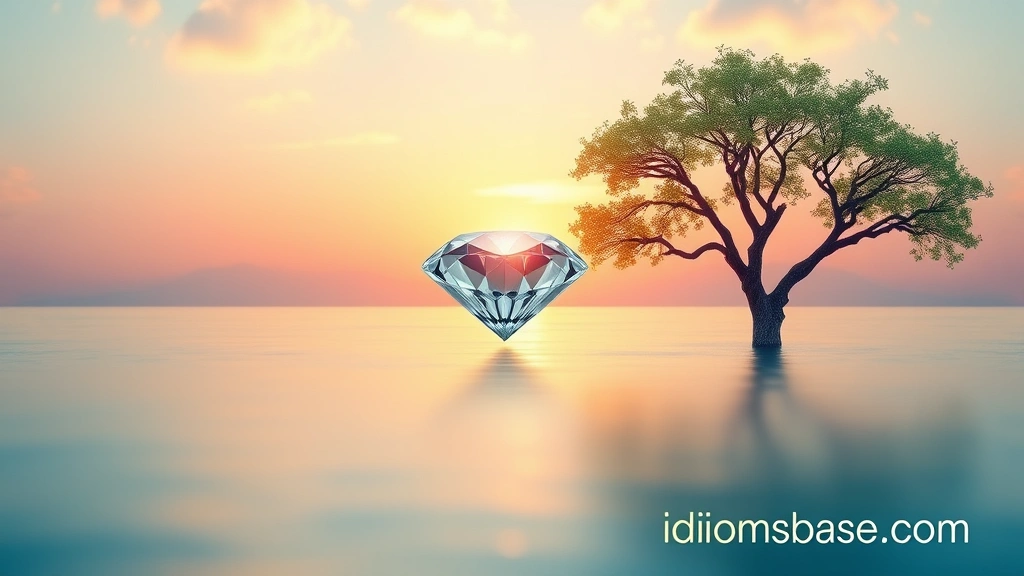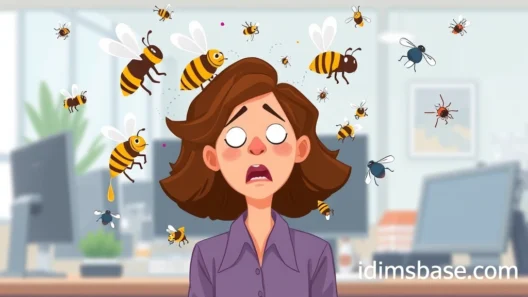Hey there, word wizards and language lovers! Have you ever found yourself searching for just the right phrase to describe something utterly, completely, undeniably perfect? It’s a feeling we all know – that moment when everything aligns, when something is so flawless it almost takes your breath away. But "perfect" can feel a little, well, plain, can't it? It's like a single note when you're trying to compose a symphony!
That's where metaphors come in! They’re your secret weapon, transforming everyday descriptions into vibrant, imaginative masterpieces. Metaphors are like little word paintings, helping your audience feel what you're trying to convey. They connect two seemingly unrelated things to create a deeper, richer meaning. And when it comes to describing "perfect," metaphors are your best friends! They add sizzle, sparkle, and a whole lot of personality. Ready to dive into a treasure trove of expressions that will make your descriptions sing? Let's unlock 38 fabulous metaphors for "perfect" that will elevate your writing and conversations!
Metaphors for "Perfect"
Here are some truly wonderful ways to say "perfect" without actually saying it. Each one paints a unique picture, offering a fresh perspective.
- A Seamless Tapestry: Imagine threads woven so beautifully, so flawlessly, that you can't see where one begins and another ends. That's true perfection – no snags, no loose ends, just pure artistry.
- A Symphony in Full Bloom: Think of an orchestra playing in perfect harmony, every note resonating with beauty. It's not just sound; it's an experience, a peak of auditory bliss.
- The Gold Standard: This one is classic! It implies the highest possible quality, the benchmark against which all others are measured. It's the ultimate achievement.
- A Flawless Diamond: Diamonds are already symbols of perfection, but a flawless one? That's the epitome of purity and brilliance, reflecting light without any internal imperfections.
- A Well-Oiled Machine: Every gear, every cog, every moving part works in absolute synchronicity. No squeaks, no hitches, just smooth, efficient operation. It's about precision and reliability.
- The Bullseye: When an archer hits the dead center of the target, it's not by accident. It's a testament to skill, focus, and hitting exactly what was intended. Spot on!
- A Polished Mirror: So clear, so reflective, it shows everything exactly as it is, without distortion or blur. It speaks to clarity, precision, and a lack of blemish.
- The Missing Piece of the Puzzle: You know that satisfying click when the last piece fits perfectly? That's this metaphor. It completes something, making it whole and ideal.
- A Masterpiece: Whether it's a painting, a sculpture, or a piece of music, a masterpiece is something of unparalleled artistic merit. It's the pinnacle of creation.
- A Gilded Lily: This one is interesting! While "gilding the lily" means to add unnecessary adornment to something already perfect, the lily itself, in its natural state, is already considered beautiful and perfect.
- The Zenith: This is the highest point something can reach, its absolute peak. Think of the sun directly overhead at noon – its highest point in the sky. It's about ultimate attainment.
- A Picture of Health: When someone is perfectly healthy, vibrant, and strong, they are a "picture of health." It implies a complete and ideal state of being.
- A Well-Struck Chord: In music, a chord where every note is played with precision and blends harmoniously. It creates a rich, full sound that is just right.
- The Cream of the Crop: This metaphor suggests the very best, the top selection from a group. It's the elite, the finest quality available.
- A Perfectly Tuned Instrument: Every string, every key, every component is adjusted to produce the exact right sound. It's ready to create beautiful music without any false notes.
- A Seamless Fit: Like two pieces of wood joining so precisely you can barely see the seam. It's about exactness and ideal compatibility.
- The Epitome of Excellence: This phrase means the perfect example of something, the embodiment of its best qualities. It's the definitive illustration.
- A Dream Come True: When something is even better than you imagined, it's like a dream becoming reality. It's about ideal fulfillment and ultimate satisfaction.
- A Stroke of Genius: An idea or action that is so brilliant and effective, it seems almost divinely inspired. It's about ingenuity and flawless execution.
- Hitting the Nail on the Head: You've found the exact solution, the precise answer, or the perfect description. It's about accuracy and being absolutely right.
- A Needle in a Haystack (found!): While finding it is hard, once it's found, it's the exact thing you were looking for, making it perfect for the situation.
- A Perfect Storm (in a positive sense): While often negative, this can describe a situation where multiple positive factors align perfectly to create an ideal outcome.
- The Sweet Spot: That ideal point or condition where everything feels just right, whether it's in sports, business, or life. It's about optimal balance.
- A Well-Oiled Machine: (Yes, it's so good, it deserves a revisit!) Its reliability and smooth operation make it a fantastic metaphor for perfection in function.
- The Pinnacle: Similar to "zenith," this refers to the highest, most successful point of achievement or development. It's the peak performance.
- A Cut Above: Something that stands out as superior, better than the rest. It implies a higher standard of quality and excellence.
- The Holy Grail (found!): This legendary object represents the ultimate quest, something immensely desirable and perfectly suited to its purpose once found.
- A Guiding Star: Something that leads you precisely where you need to be, without error or deviation. It's about unerring direction.
- A Crystal Clear Vision: When your understanding or plan is perfectly lucid, without any blurriness or doubt. It's about absolute clarity.
- The Quintessence: This means the most perfect or typical example of a quality or class. It's the pure, concentrated essence of something ideal.
- A Hand in Glove: Two things that fit together so perfectly, so naturally, they seem made for each other. It's about ideal compatibility and seamlessness.
- A True North: Like a compass needle always pointing to the North Pole, this signifies an unwavering, exact, and perfect direction or principle.
- A Work of Art: Something created with such skill and beauty that it transcends mere function to become aesthetically perfect.
- The Ultimate Benchmark: Similar to the gold standard, it's the definitive point of comparison, the absolute best that can be achieved.
- A Seamless Transition: Moving from one state or phase to another without any bumps, hitches, or awkwardness. It's about smooth, ideal progression.
- A Perfect Fit: This classic phrase is a metaphor in itself, implying that something aligns exactly with what is needed or desired.
- A Diamond in the Rough (polished): While the raw diamond needs work, once it's "polished," it reveals its inherent, undeniable perfection.
- The Ideal Prototype: The very first model that perfectly embodies all desired characteristics, setting the standard for all future versions.
Key Takeaways

- Elevate Your Language: Using metaphors instead of "perfect" adds depth, color, and originality to your descriptions.
- Paint a Picture: Metaphors help your audience visualize and feel what you're conveying, making your communication more impactful.
- Show, Don't Just Tell: Instead of telling someone something is perfect, use a metaphor to show them how it's perfect.
- Boost Engagement: Unique and imaginative language keeps your readers hooked and makes your content memorable.
- Versatility: These metaphors can be applied to people, situations, objects, ideas, and more!
Frequently Asked Questions
Q1: What is a metaphor, and how does it differ from a simile?
A metaphor is a figure of speech that directly compares two unlike things without using "like" or "as." It states that one thing is another. For example, "Her smile is sunshine." A simile, on the other hand, compares two unlike things using "like" or "as." For example, "Her smile is like sunshine." The key difference is the directness of the comparison.

Q2: Why is it important to use metaphors in writing?
Using metaphors makes your writing more vivid, engaging, and memorable. They help readers form mental images, understand complex ideas by relating them to familiar concepts, and add a layer of sophistication and creativity to your language. They allow you to convey emotion and nuance more effectively than literal language alone.
Q3: Can I create my own metaphors for "perfect"?
Absolutely! The best metaphors are often original and specific to the context you're writing about. Think about what "perfect" means in that particular situation. Is it about precision? Smoothness? Beauty? Completeness? Then, brainstorm objects, concepts, or experiences that embody that specific quality. For example, if you're describing a perfectly executed dance move, you might say, "It was a liquid sculpture."

Q4: How can I choose the best metaphor for my specific context?
Consider the tone and purpose of your writing. Is it formal or informal? Humorous or serious? Also, think about your audience. Will they understand the comparison you're making? Choose a metaphor that resonates with your message and adds clarity rather than confusion. The goal is to enhance understanding and create a stronger impression.
Q5: Are there any common pitfalls to avoid when using metaphors?
Yes! Avoid mixed metaphors (combining two unrelated metaphors in one phrase, like "He was a bull in a china shop, but he also turned over a new leaf"). Also, try not to use clichés too often, as they can lose their impact. Make sure your metaphor makes sense and doesn't distract the reader. The best metaphors feel natural and intuitive.
You've just unlocked a whole new level of linguistic power! Now, instead of just saying something is "perfect," you can describe it as "a well-oiled machine," "the bullseye," or "a seamless tapestry." Go forth and weave your words with newfound brilliance! Which one of these metaphors resonated most with you? Or do you have a favorite "perfect" metaphor of your own? Share your thoughts and let's keep this conversation flowing!





